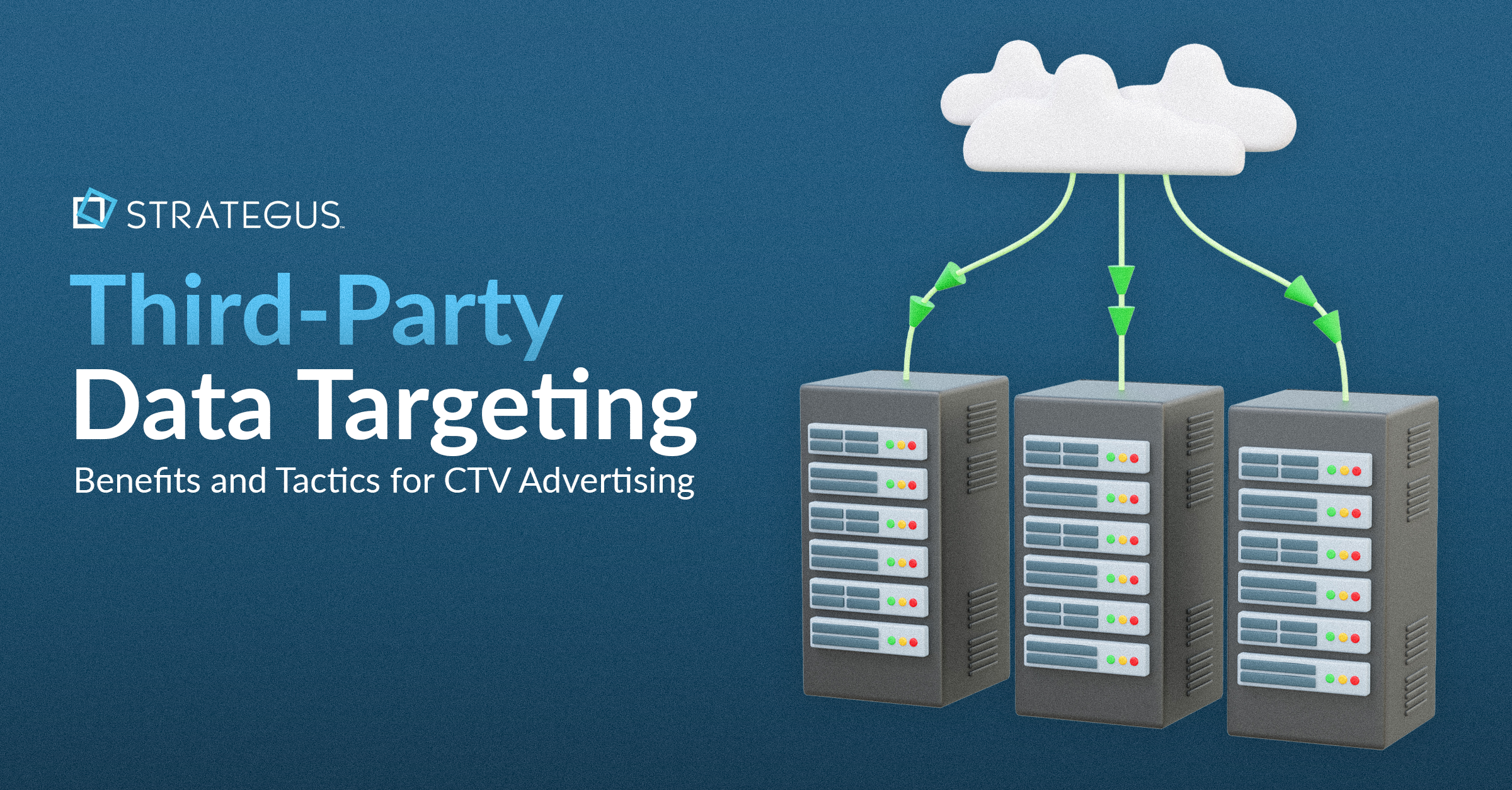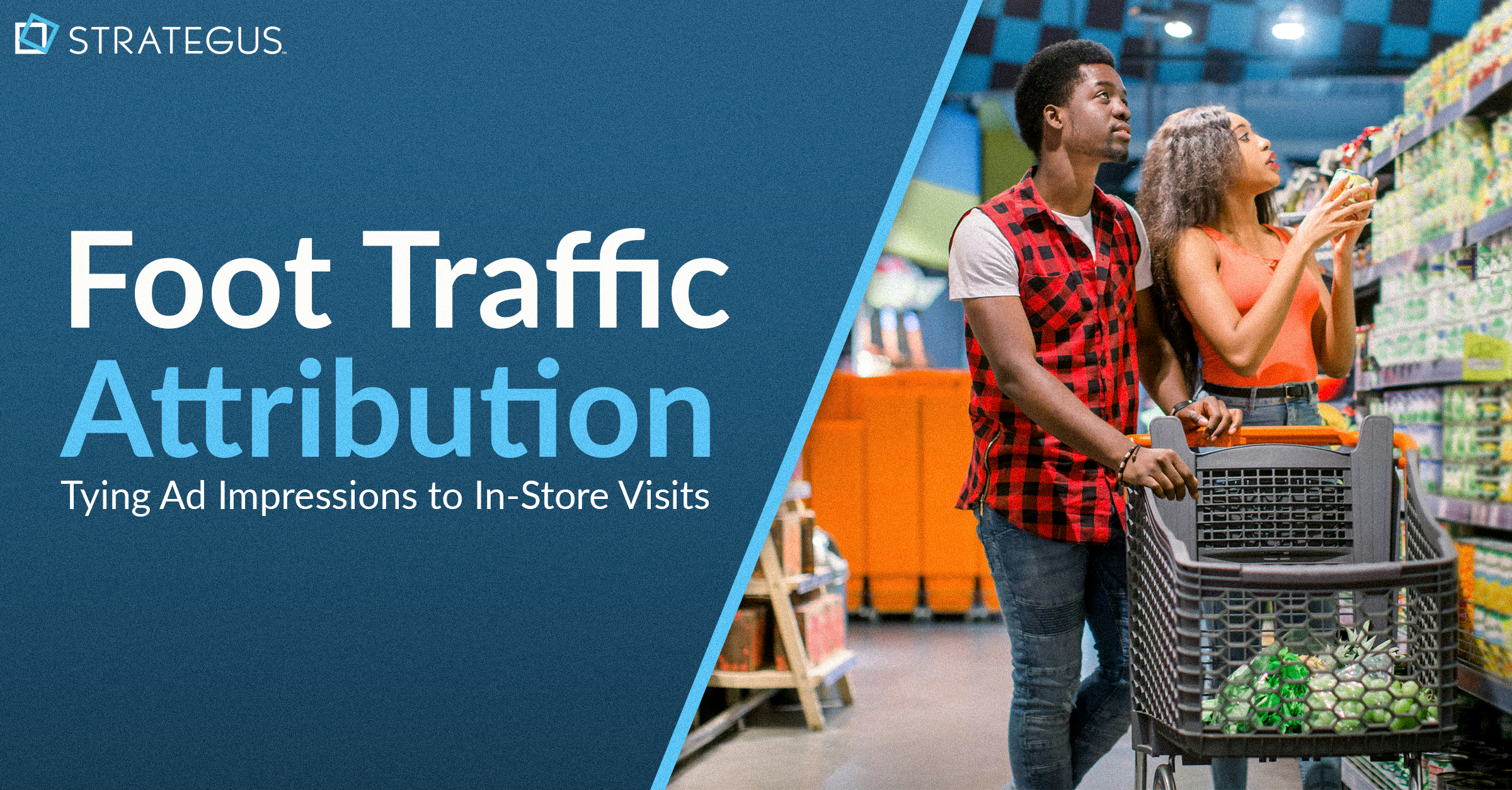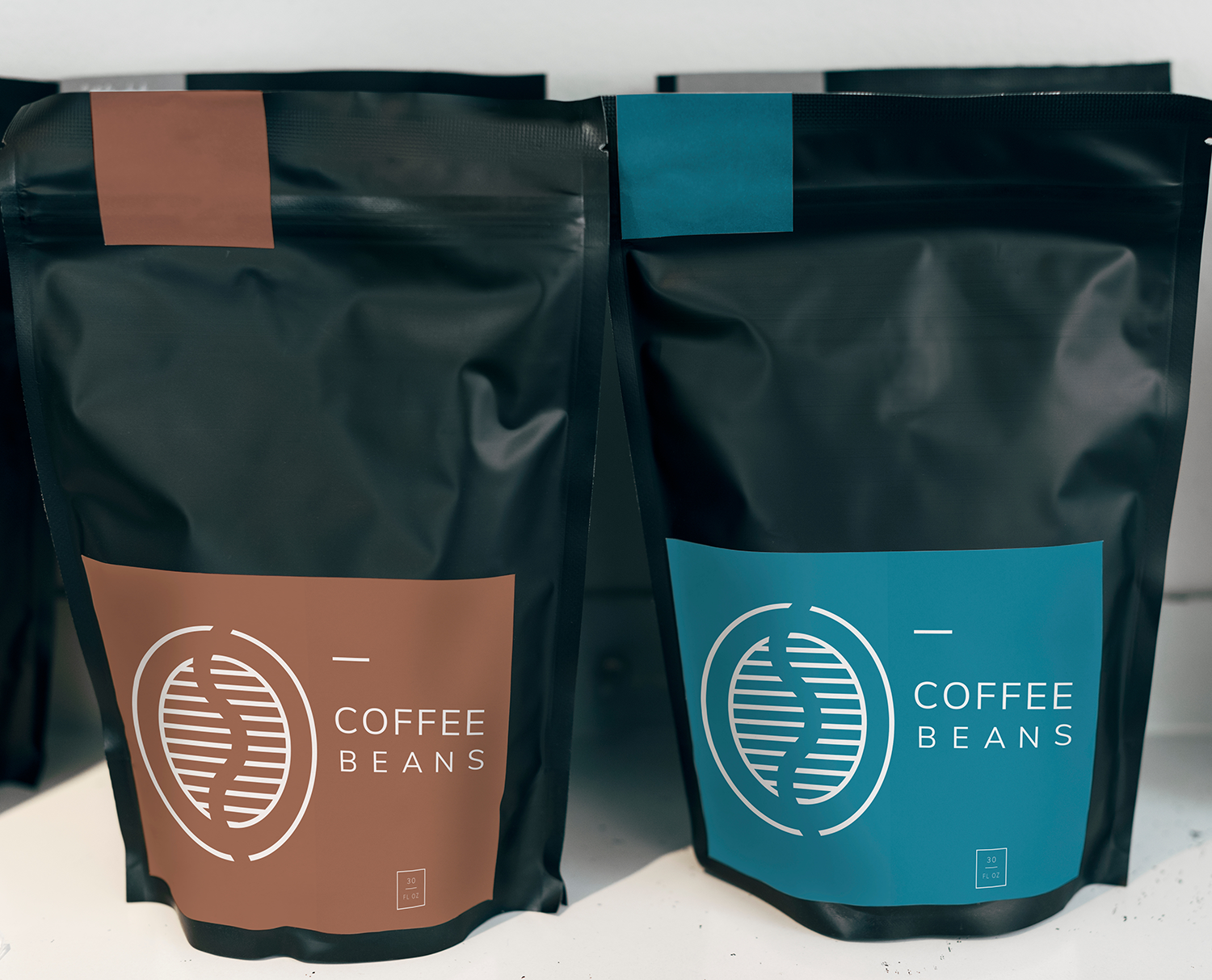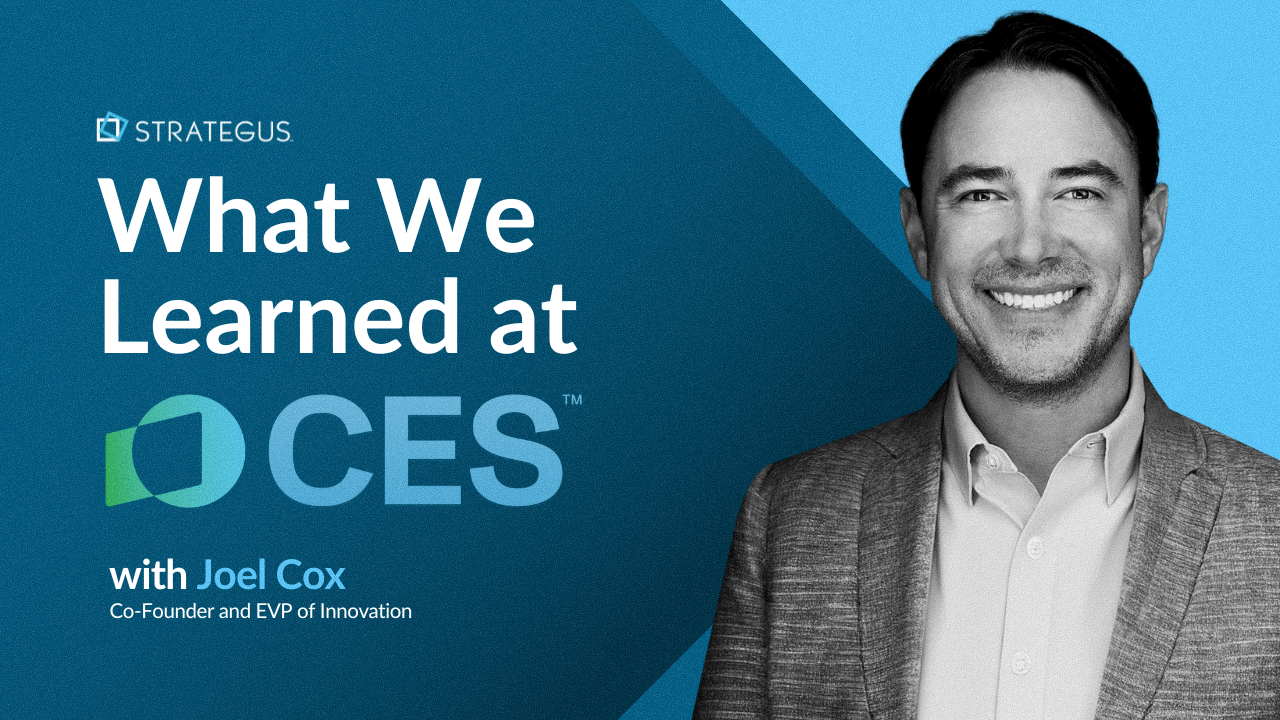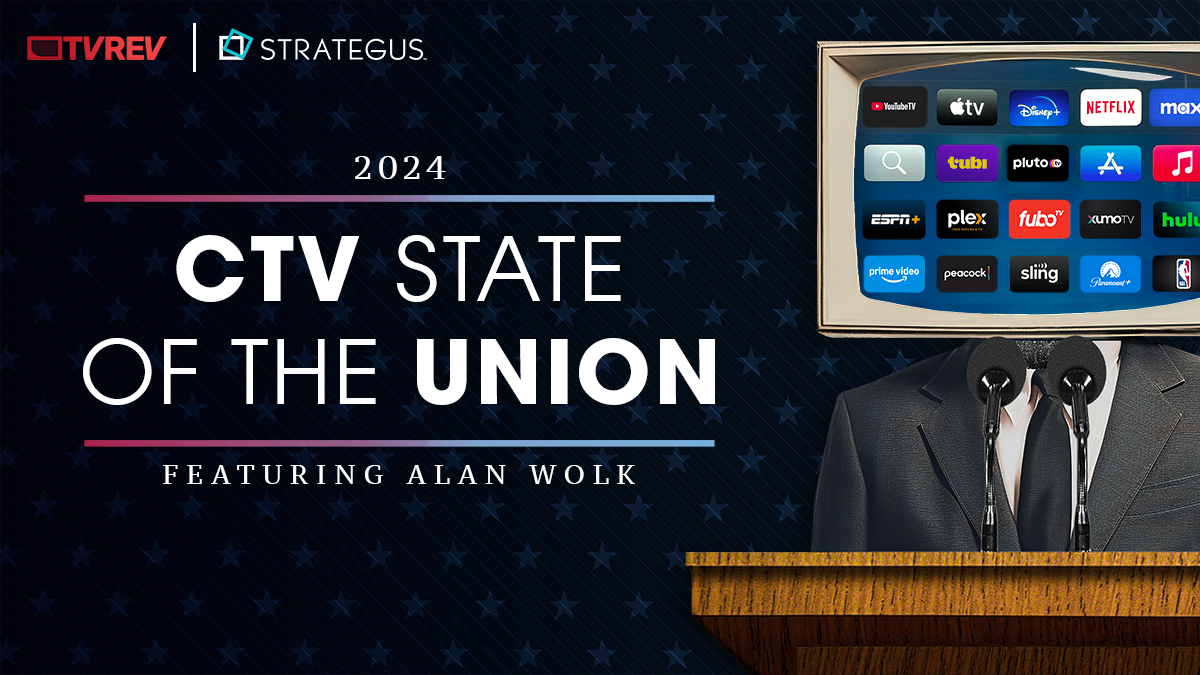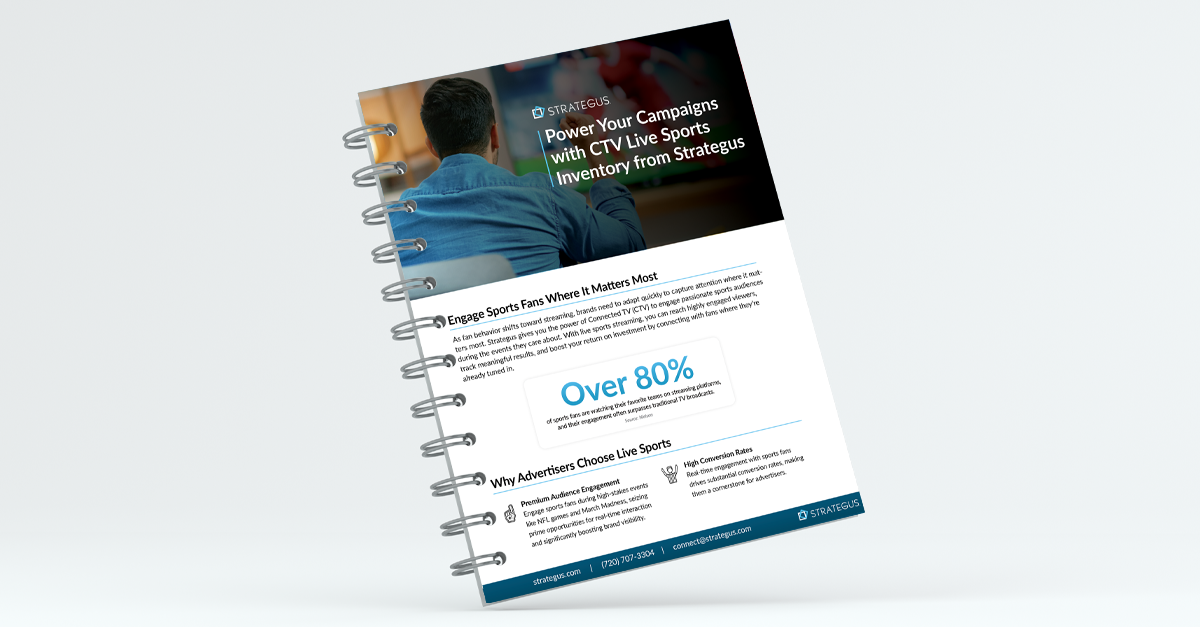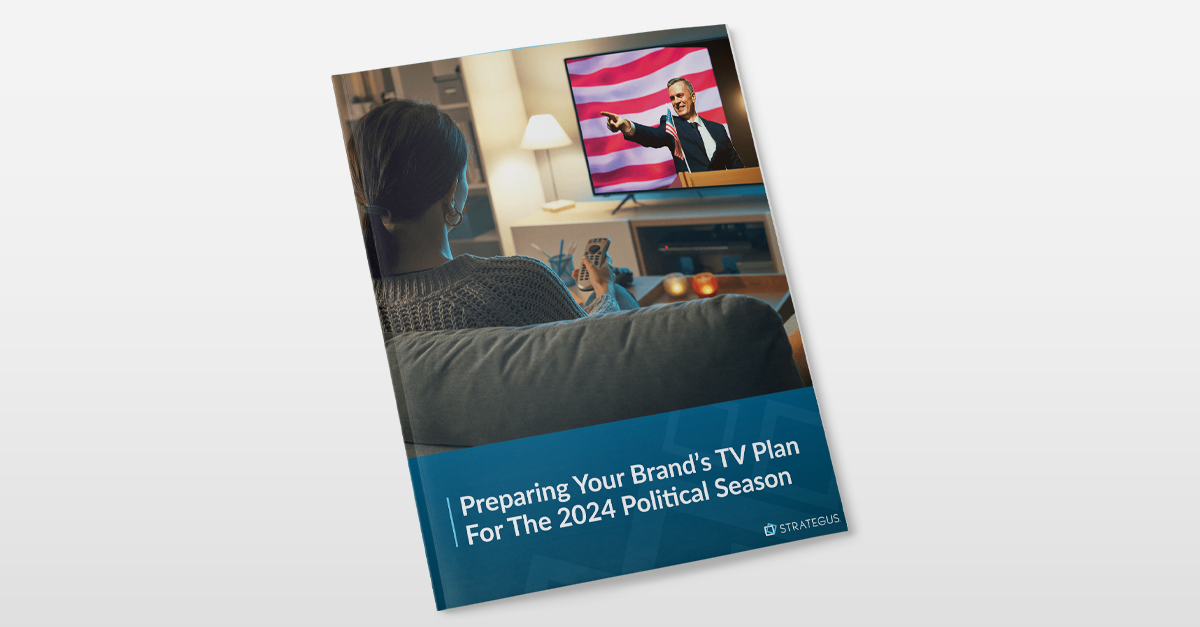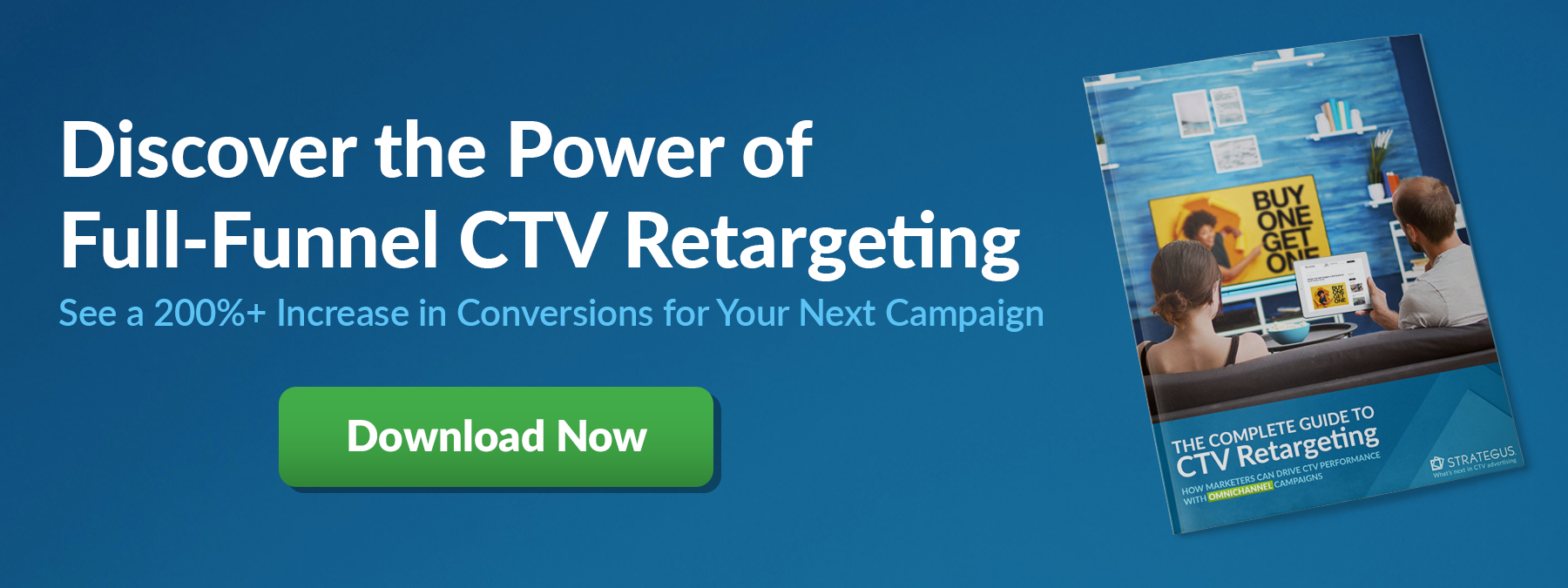- Home
- Strategus Blog
- First-Party Data Targeting: Benefits and Tactics for CTV Advertising
First-Party Data Targeting: Benefits and Tactics for CTV Advertising
 Traci Ruether
Traci Ruether
10 minutes read
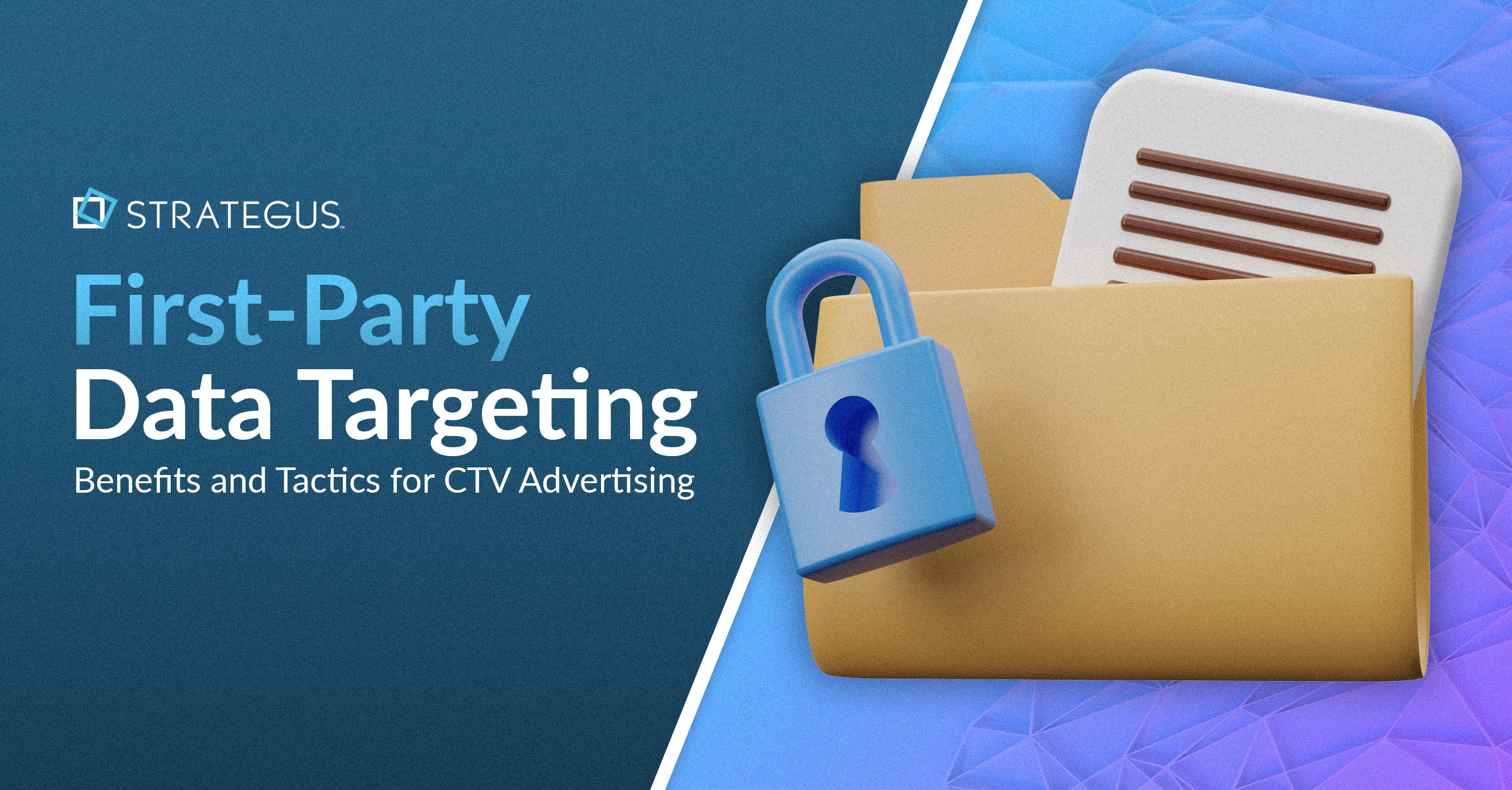
First-party data is the information that companies collect directly from their customers rather than through intermediaries. Advertisers use this data to target the right buyers, deliver more relevant messages, and precisely measure campaign performance.
What sets first-party data apart from its alternatives — namely third-party data sources — is that it’s more accurate and privacy-friendly. How so? It all comes down to how the data is collected.
First-party data is gathered through owned channels like the company website, app, and point-of-sale (POS) system. Prospects and customers provide this information willingly, making it highly compliant with evolving data privacy initiatives. What’s more, this data is inherently more reliable than third-party sources because it’s collected through direct interactions.
By using this insight is used to create targeted digital ad campaigns, advertisers can meet prospects and customers exactly where they are with relevant messaging. Called first-party data activation or first-party data targeting, this technique allows agencies and brands to reach specific audience segments, exclude existing customers, and/or build lookalike audiences based on current customer attributes.
What does this look like in connected TV (CTV) advertising? Imagine a car dealership running TV ads to past buyers showcasing the newest SUV models or a furniture store targeting customers who recently purchased a sofa with ads for complementary items like coffee tables or area rugs.
First-Party Data at a Glance

First-party data usually takes the form of prospect and customer data obtained via touchpoints like in-store purchases, website interactions, social media, online purchases, surveys, and subscriptions.
One of the most common examples of first-party data is a company’s CRM list, which consolidates a range of useful insight into customers and prospects.
First-party data might include:
- Contact information (name, email, phone number, address)
- Purchase history and transaction details
- Customer service interactions and support tickets
- Website behavior and engagement metrics
- Email open rates and click-through rates
- Demographic information (age, gender, occupation)
- Preferences and interests indicated by the customer
- Loyalty program data and rewards points
Examples of First-Party Data Targeting for CTV
At Strategus, we specialize in CTV-first advertising campaigns. This means that we work with agencies and brands to develop programmatic ad campaigns that initially engage potential buyers on the living room TV. Once those viewers have been exposed to a big-screen ad, we then retarget them across supplementary channels to drive conversions.
Using first-party activation, we work with agencies and brands to implement a range of first-party data targeting techniques.
 Website Retargeting
Website Retargeting
Retarget users who have visited your website with CTV ads in their home, reminding them of your products or services and encouraging them to return to your site or visit a brick-and-mortar location. This usually involves placing a pixel on your website to gather information about visitors.
Example: Ever received an email about your abandoned shopping cart? This is the same idea, but with a big-screen impact.
Current Customer Whitelisting
Deliver personalized ads to known customers, enhancing engagement and loyalty by tailoring messages to their specific needs and preferences.
Example: A local lawn care service could use whitelisting to inform their loyal customers about seasonal specials at the start of the summer.
Existing Customer Blacklisting
Avoid wasting ad spend by excluding current customers from acquisition campaigns, ensuring that your ads are only shown to potential new customers.
Example: A bank running a campaign to attract new checking account customers could blacklist their existing customers to avoid showing them irrelevant ads.
Custom Segmentation
Segment audiences based on CRM data, purchase history, and website interactions for tailored messaging. This allows you to create highly specific audience segments and deliver the most relevant ads possible.
Example: A travel agency could segment their audience based on past travel preferences, such as adventure travel, family vacations, or luxury getaways, and then tailor their CTV ads to showcase relevant destinations and packages.
Lapsed Customer Targeting
Re-engage users who have interacted with your brand but haven’t converted recently.
Example: A cosmetic brand could use lapsed customer targeting to re-engage customers who haven't purchased their product in the past three months. Knowing that most people go through their products every six months on average, the brand could run a CTV ad reminding those customers to restock and offering a discount on their next purchase.
Look-Alike Modeling
Use data from your existing customers, website visitors, and CRM files to create look-alike audiences that mirror your best customers, enabling you to reach new, high-potential users who share similar characteristics and behaviors.
Example: A luxury furniture store might use look-alike modeling to identify individuals who exhibit similar shopping patterns as their high-value customers. This could involve analyzing data on demographics, online browsing behavior, and purchase history to identify individuals who are likely to be interested in their products but have not yet made a purchase.
Why Advertisers Are Investing in First-Party Data
According to the Interactive Advertising Bureau, 71% of brands, agencies, and publishers are increasing their first-party datasets to ensure compliance with privacy laws and build more sustainable marketing strategies.
In other words, this type of targeting doesn’t just allow you to reach the right people, at the right time, with the right message — it also future-proofs your marketing strategy in an increasingly privacy-conscious landscape.

(Source: IAB)
The shift to first-party data is being spurred by an industry-wide prioritization of transparency and informed consent. In layman's terms, brands and agencies are facing more scrutiny into how customer data is collected and used. As such, advertisers are investing more consumer-friendly techniques like first-party data activation.
Rachel Dillon, our EVP of Sales and Marketing, breaks it down:
Get the Best of Both Worlds
While first-party data is highly valuable, that doesn’t mean it’s the be-all and end-all. At Strategus, we’re big believers in the power of second- and third-party data, as well — which is why we blend multiple sources when designing campaigns.
|
|
|
|
|
|
Summary |
|
Data that’s shared between two businesses through a partnership, acquisition, co-branding, etc. |
Data aggregated and sold by external companies or data providers without a direct link to your business. |
|
Example |
A CRM list containing the contact information, interests, and demographics of customers. |
|
Insight into potential customers’ dietary habits, shopping preferences, and income gathered by third-party providers. |
|
Benefit |
Reliable, accurate, and unique info about a brand’s audience that’s compliant with data privacy regulations. |
|
Comprehensive information that acts as an additional data point for understanding the market as a whole. |
|
Limitation |
|
Dependence on the trustworthiness of a partner; potential privacy and compliance issues. |
Can be less accurate than first- and second-party data and is experiencing signal loss due to how it’s collected. |
We start by getting to know your brand, your goals, and your target audience. From there, we combine every relevant data point at our disposal — including your CRM, internal insight, retail media, our ecosystem of 200+ data partners, insight from the publishers and DSPs we integrate with, and more.
We work with you to identify the perfect mix of data to build custom audiences. This could mean using Amazon shopper data to find viewers who’ve been shopping for similar products or Edmunds automotive data to find in-market car buyers.
But we don’t stop there. We’ll also partner with you to launch and optimize these CTV campaigns as an extension of your team. In other words, we combine data-driven tech with human-centered strategy and execution.
Ready to get started? Contact us today.

Traci Ruether is a content marketing consultant specializing in video tech. With over a decade of experience leading content strategy, she takes a metrics-driven approach to storytelling that drives traffic to her clients' websites. Follow her on LinkedIn or learn more at traciruether.com.
Strategus is a managed services connected TV(CTV) advertising agency with over 60,000+ campaigns delivered. Find out how our experts can extend your team and drive the result that matter most.
Talk to an Expert
Table of Contents
Seeking a Custom CTV Strategy That Delivers?
What to read next
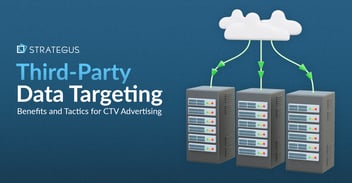
Third-Party Data Targeting for CTV: Benefits & Tactics
Third-party data. It’s a term that’s thrown around, and yet few take the time to detail its pros and cons — much less strategies for using...
7 minutes read
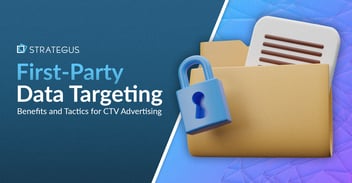
First-Party Data Targeting: Benefits and Tactics for CTV Advertising
First-party data is the information that companies collect directly from their customers rather than through intermediaries. Advertisers use this...
10 minutes read

Foot-Traffic Attribution: Tying Ad Impressions to In-Store Visits
The marketing funnel has changed. Today’s shoppers often begin researching products from the comfort of their homes and don’t set foot into a store...
8 minutes read

CTV Attribution: What It Is and How It Works
Connected TV (CTV) viewing is on the rise — and that’s good news for marketers. Not only can CTV ads be precisely targeted to individual households,...
9 minutes read



